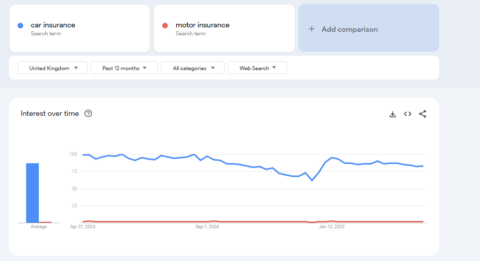To use keywords in copywriting effectively, prioritise on understanding your target audience’s search intent. It’s essential that your chosen keywords align with the user’s intent. Strategically yet subtly weave your keywords into headlines and subheadings and ensure that the search terms read naturally within the copy.
Understand your target market and their search intent
Put yourself in your target market’s shoes.
- What questions is your target market asking?
- What are the problems that your target audience is facing?
- What terminology does your target market use to find your products and services?
The more you understand about your niche, the more impactful and insightful your keyword research will be. Search intent is the reason behind every search query. The more you understand about the motives of your target market, the greater advantage you have to align your content to the needs and wants of your potential customers.
Keyword research – identify relevant search terms
There are many keyword research tools on the market from Google Keyword Planner, Semrush, Ahrefs, Answer The Public and QuestionDB. Considering what you know about your target market, you can identify relevant search terms related to your target audience and business. The most searched keywords are usually the most competitive, so the Holy Grail is to find high ranking keywords that don’t have a great deal of competition (also known as long-tail keywords).
Long-tail keywords are great for the following reasons:
- Longer tail terms are generally between 3 to 5 words and more concise.
- Search terms that are more concise result in less traffic. However, they are more likely to convert because the user knows exactly what they want.
For example:- “SEO agency” has 5,400 monthly searches
- “SEO agency services” has 90 monthly services
- The more concise your keywords, the more likely someone will convert as the user is currently in the buying phase.
- As the keyword difficulty is often less for longer tail search terms, you are likely to see greater improvements in the Google rankings more rapidly.
Avoid keyword stuffing
The days of keyword stuffing are far behind us, and Google is much more intelligent and understands the quality of the content we’re creating. So whilst it’s all well and good simply saying that you need to include keywords in your copy, the problem is where to start, and how to implement them properly, without affecting the quality of any existing content you have.
The art of getting the most out of keywords is to be clever and original, whilst still focusing on ultimately answering a customer query. If you’re not a confident writer, we highly recommend getting the help of an SEO copywriter to ensure you’re left with well-optimised content which will help get more search traffic to your site.
Types of Keywords to Use
There are a variety of keywords that you can use. However, the more specific the better, especially for pages deep within your site such as a specific product or service that you offer.
- Root keyword
This is the main keyword that you are aiming for such as: “flights”, “computers” or “garden tools”. The root keyword is the ultimate keyword that you want your website to rank for. Depending on the competition in your niche, this root keyword may require a tremendous amount of effort and may not be possible to rank high on Google in the short term. Therefore, it’s best to optimise your content for more “longer tail” variations of the root keyword first. That said, it’s equally important to include your “root keyword” on the landing page. So that, Google can understand the context of the landing page. - Qualifier keywords
These are added word(s) to your root keyword. This usually revolves around an adjective (e.g. cheap), a brand (e.g. British Airways), location (e.g. Spain), in addition to application, product type, or product feature. - Modifiers
These are keywords that are similar but are slightly modified, e.g. cheap, cheaper, cheapest. - Synonyms
Usually people won’t always search for the same keyword. For example: “car insurance” or “motor insurance”. It’s also important to determine which synonym keywords are important for your niche. You can use Google Trends to highlight the most important search terms for your business. In the screenshot below, we can see that “car insurance” is more popular than “motor insurance”.
- Singular/Plural
Some searches will include pluralised words as well as singular ones such as: “garden tool” or “garden tools”. Generally, it’s often best to focus on plural terms such as “garden tools” when focusing on e-commerce category products or targeting those with an intention to buy. Whereas singular terms are more focused on information searches. - LSI keywords
LSI (Latent Semantic Indexing) keywords are terms and phrases that are conceptually related. If we used “The Simpsons” TV show as an example, LSI keywords will include: “animated television series”, “animated sitcom”, “Springfield”, “Homer”, “Bart”, “Marge”, “Lisa” and so on. The importance of LSI keywords are conceptually related and most found in other related content. Therefore, using conceptually related terms, where relevant, can help you to rank higher in the search engines.
Keywords Stemming
This process of finding variants around your root keyword is called “keywords stemming” and is a very useful way to create lots of variations that can be included into your web content. Don’t worry, Google is smart and will pick up on the fact that these words all essentially mean the same thing, so you can still optimise your text without having to agonise over making keywords fit exactly as they appear in search data into your sentences.
When using keywords you don’t want to focus on the same keyword or keyword group across more than one page. If this happens, pages may start to compete with one another as Google isn’t sure which is the best one to rank, this is known as keyword cannibalisation. For example, if you had 3 pages all heavily targeted to “men’s sports hoodie”, you may lose out on ranking positions as opposed to if one page was properly optimised for that term. So, it’s important to have a clear structure of which pages are targeting which keywords.
Where to Use Your Keywords
Once you’ve established the keywords to use for each specific page, you now need to implement these within your website copy. As a rule, for the home page and all top-level pages you need to aim for shorter tailer keywords, these would be your root keywords, plus qualifiers and modifiers.
By including the most competitive root term on the homepage, over time you will be able to rank higher for this term. Reason being most external links generally point to the homepage. Therefore, by optimising the homepage for the most competitive term can help you in the long-term rank when your website starts to gain quality external links.
As you get to deeper pages, so that’s specific products or services, then you’ll want to use more long-tail keywords which are really specific to what people are searching for example: “ladies’ patterned gym leggings”.
When writing your content for each specific page, try to use as many variations as possible, so don’t forget about using synonyms as well as singular and plural keywords. The variety of keywords will help you avoid the issue of keyword stuffing (which Google hates) and will help you ensure your content actually makes sense. Try and write naturally, adding keywords and keyword variants where they make sense.
One of the best ways to ensure your content doesn’t sound over-optimised or keyword stuffed, is to read the content aloud or use the “Read Aloud” feature in Microsoft Word.
This should put you on track to create great quality content, which is relevant, hits the intended keywords and helps your customers to understand your products or services.
Some Final Keyword Tips
Using keywords is a fundamental part of any SEO Copywriting. However, your copy needs to be written carefully with the aim of improving conversions. Don’t overuse keywords and make sure you target the right words for the right pages.
The main benefit of using relevant keywords is that you’ll be targeting specific users and as such your Click Through Rate (CTR) for that specific term should increase. With a higher CTR for specific keywords, you’ll have greater authority for those words and as such you’ll start to rank higher for said keywords.
Search engines like to give credit where credit is due and if your site is driving traffic for a specific keyword, you’ll be rewarded. From here the best copy will help turn that traffic into conversions, so make sure your copy is compelling and engaging.







Leave a Reply